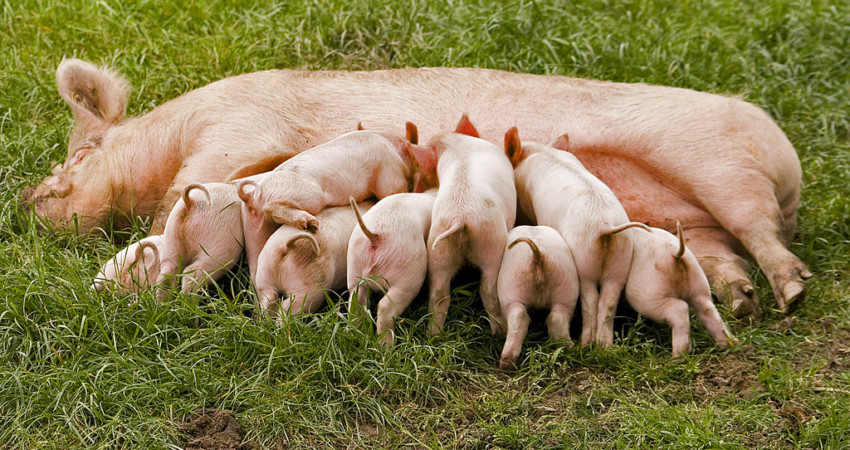

Breed selection programmes for intensive pig production have over many years emphasised productivity and especially product quality i.e fat content over welfare related characteristics, and in particular material behaviour. This is largely because it has been possible to control piglet loss that may result from poor mothering by placing sows in highly controlled conditions. These maternal characteristics become much more important in extensive, outdoor systems which place high emphasis on natural behaviour.
Selection for good maternal behaviour and piglet rearing ability results in greater productivity as well as higher standards of welfare.
There are other characteristics of intensive indoor systems that do not promote good mothering abilities. The greater leanness of some modern genotypes means that they have less protection against climatic extremes as they lack adequate thermal insulation.
Also, these breeds have limited possibility to mobilise body fat reserves to support the high metabolic demands of lactation. This situation is made worse in systems that have longer weaning age as part of their high animal welfare requirements e.g. organic systems. Longer lactations mean there are greater metabolic demands on the sow, which can result in ‘thin sow syndrome’
The onset of nest building behaviours, such as pawing and gathering straw, is associated with hormonal changes just prior to birth .
When sows are allowed to exhibit natural behaviour at farrowing, they will leave the rest of the herd 24 hours before giving birth, and spend time examining potential nesting sites, which may involve continuous wandering lasting 4–6 hours and moving between considerable distances.
After farrowing, they will remain with or close to the litter for about 9 days. After this, the nest is abandoned and the piglets follow the mother and re-join the rest of the herd although they remain an intact social unit throughout lactation.
Naturally, the piglets are weaned at between 14 and 17 weeks
 Contact Jaguza Support
Contact Jaguza Support